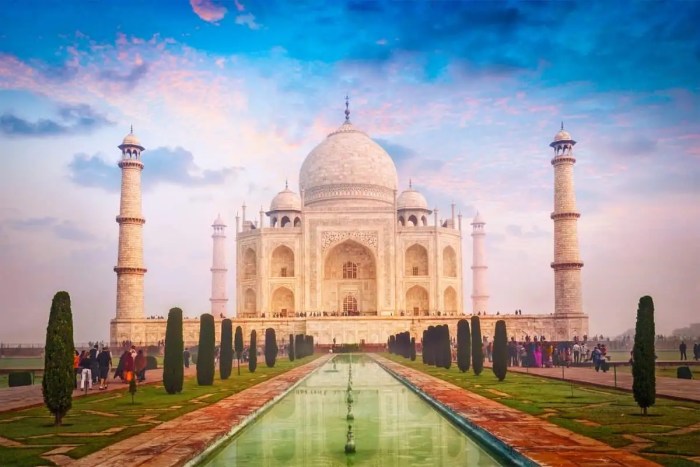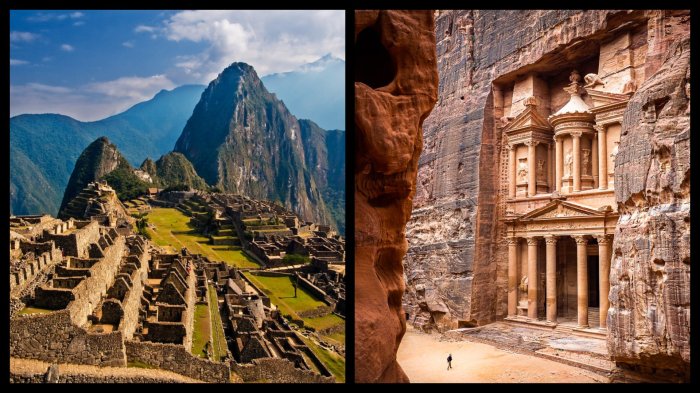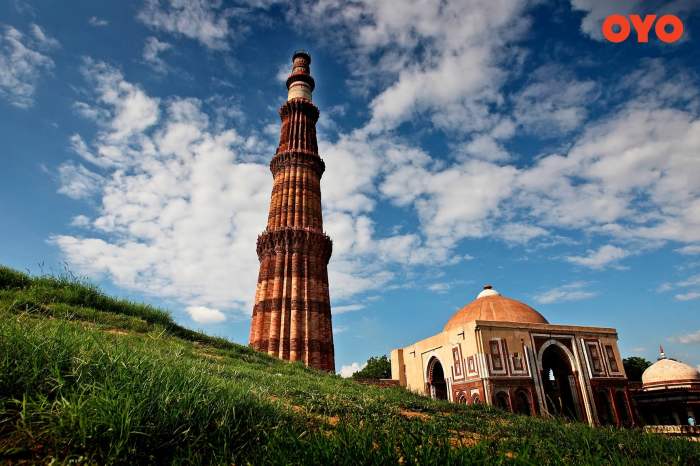UNESCO World Heritage Sites stand as testaments to the boundless creativity and cultural heritage of humanity. Established under the World Heritage Convention, these sites embody exceptional universal value, representing the pinnacle of human achievement and the wonders of the natural world. From ancient ruins to awe-inspiring landscapes, UNESCO World Heritage Sites safeguard our collective memory and inspire generations to come.
The World Heritage Convention, adopted in 1972, provides a framework for international cooperation in safeguarding cultural and natural heritage. It sets forth the criteria for selecting sites for inclusion on the World Heritage List and establishes mechanisms for their protection and preservation.
Overview of UNESCO World Heritage Sites

UNESCO World Heritage Sites are places of outstanding universal value that are recognized and protected by the United Nations Educational, Scientific and Cultural Organization (UNESCO). These sites represent the cultural and natural heritage of humanity and are considered to be of great importance for present and future generations.
The World Heritage Convention was established in 1972 and has been ratified by over 190 countries. The Convention sets out the criteria for selecting and protecting World Heritage Sites and establishes a fund to help countries preserve their cultural and natural heritage.
Establishment and Evolution of the World Heritage Convention
The World Heritage Convention was established in response to the growing concern about the destruction of cultural and natural heritage around the world. In the 1960s and 1970s, a number of important cultural sites were destroyed or damaged, including the Abu Simbel temples in Egypt and the Bamiyan Buddhas in Afghanistan.
The World Heritage Convention was adopted by UNESCO in 1972 and entered into force in 1975. The Convention has been instrumental in protecting and preserving cultural and natural heritage around the world. Over 1,100 sites have been inscribed on the World Heritage List, and many more are nominated each year.
Selection Criteria and Process

The UNESCO World Heritage Committee uses ten selection criteria to evaluate potential World Heritage Sites. These criteria assess the site’s cultural, historical, natural, and scientific significance. To be included on the World Heritage List, a site must meet at least one of these criteria.
Nomination and Evaluation Process
The nomination process for potential World Heritage Sites is rigorous and competitive. Countries submit nominations to the World Heritage Committee, which then evaluates the sites based on the selection criteria. The committee considers factors such as the site’s authenticity, integrity, and management plan. If a site meets the criteria, it is inscribed on the World Heritage List.
Categories of World Heritage Sites: UNESCO World Heritage Sites

UNESCO World Heritage Sites are classified into three distinct categories based on their exceptional cultural, natural, or combined values. These categories guide the selection and preservation of sites that hold immense significance for humanity and our planet.
The three categories are:
Cultural
- Sites that represent unique and outstanding human creations, such as architectural masterpieces, archaeological remains, or historical settlements.
- Examples: Taj Mahal (India), Great Wall of China (China), Colosseum (Italy)
Natural
- Sites that exhibit exceptional natural beauty or geological formations, including mountains, forests, lakes, and wildlife habitats.
- Examples: Grand Canyon (USA), Serengeti National Park (Tanzania), Great Barrier Reef (Australia)
Mixed
- Sites that possess both outstanding cultural and natural significance, combining elements of both categories.
- Examples: Machu Picchu (Peru), Uluru-Kata Tjuta National Park (Australia), Yosemite National Park (USA)
Geographical Distribution of World Heritage Sites

The distribution of World Heritage Sites across the globe reflects the rich diversity of cultural and natural heritage around the world. Some regions boast a high concentration of sites, while others have a more dispersed distribution.
The interactive map below provides a visual representation of the global distribution of World Heritage Sites, allowing you to explore the concentration and diversity of sites across different regions.
Interactive Map
[Insert interactive map here]
Threats and Preservation of World Heritage Sites
World Heritage Sites face numerous threats that can compromise their integrity and authenticity. These threats include:
- Climate change
- Urbanization
- Tourism
- Pollution
- War and conflict
Preservation and Protection Strategies, UNESCO World Heritage Sites
To preserve and protect World Heritage Sites, various strategies and initiatives have been implemented:
- International cooperation: UNESCO collaborates with governments, organizations, and communities to implement conservation measures.
- Monitoring and assessment: Regular monitoring and assessment of sites helps identify threats and track their impact.
- Management plans: Comprehensive management plans Artikel strategies for preserving and protecting sites, addressing specific threats and vulnerabilities.
- Education and awareness: Raising awareness about the importance of World Heritage Sites and promoting responsible tourism can mitigate threats.
- Restoration and rehabilitation: In cases of damage or deterioration, restoration and rehabilitation efforts aim to restore sites to their original state.
li>Sustainable tourism: Promoting responsible tourism practices can minimize the negative impacts of tourism on sites.
Cultural and Economic Impact of World Heritage Sites
World Heritage Sites possess immense cultural significance and heritage value, representing the collective legacy and accomplishments of human civilization. They serve as tangible reminders of our past, preserving unique architectural marvels, archaeological ruins, and cultural landscapes that tell stories of diverse cultures and epochs.
When exploring the rich history and culture of UNESCO World Heritage Sites, it’s crucial to prioritize eco-friendly travel practices. From reducing your carbon footprint to respecting local customs, eco-friendly travel tips can help you minimize your impact while preserving these iconic landmarks for future generations.
By embracing sustainable tourism practices, you can ensure that the beauty and significance of UNESCO World Heritage Sites endure for years to come.
Cultural Significance
- Preservation of Cultural Heritage: World Heritage Sites safeguard and protect valuable cultural assets, ensuring their preservation for future generations and promoting cultural diversity.
- Education and Awareness: These sites provide educational opportunities, fostering an appreciation for history, culture, and the environment, and raising awareness about the importance of heritage conservation.
- Sense of Identity: World Heritage Sites serve as symbols of national and cultural identity, instilling a sense of pride and belonging among local communities and visitors alike.
Economic Benefits
World Heritage Sites also play a significant role in economic development and tourism. Their designation as cultural treasures attracts visitors from around the world, generating revenue through tourism and supporting local businesses.
- Tourism Revenue: World Heritage Sites are major tourist destinations, bringing in substantial revenue for local communities. The influx of tourists supports hotels, restaurants, transportation, and other tourism-related businesses.
- Job Creation: Tourism associated with World Heritage Sites creates employment opportunities in various sectors, including hospitality, transportation, and cultural heritage management.
li>Economic Multiplier Effect: The revenue generated from tourism in World Heritage Sites has a multiplier effect on the local economy, stimulating other sectors and promoting overall economic growth.
Role of UNESCO in Safeguarding World Heritage
UNESCO plays a crucial role in protecting and promoting World Heritage Sites, ensuring their preservation and accessibility for future generations.
UNESCO World Heritage Sites offer an unparalleled opportunity to explore the world’s cultural and natural treasures. Whether it’s the awe-inspiring architecture of ancient ruins or the breathtaking beauty of natural landscapes, these sites provide unforgettable experiences for families on budget family vacations.
From the Great Wall of China to the rainforests of the Amazon, there’s a UNESCO World Heritage Site to suit every taste and interest.
The organization undertakes various initiatives to safeguard these sites, including monitoring their condition, providing conservation assistance, and building capacity in local communities.
Monitoring
UNESCO monitors the state of World Heritage Sites through regular reporting and on-site inspections. This monitoring helps identify potential threats and allows for timely intervention to address them.
Conservation
UNESCO provides technical and financial assistance to countries for the conservation of World Heritage Sites. This support includes restoration projects, training programs, and the development of management plans.
Exploring UNESCO World Heritage Sites can be an enriching experience. If you seek an adrenaline rush, consider incorporating extreme sports vacations into your itinerary. From bungee jumping off Victoria Falls to zip-lining through the Amazon rainforest, these activities offer unforgettable experiences.
Afterward, return to the tranquility of UNESCO World Heritage Sites, where you can appreciate their cultural and historical significance.
Capacity Building
UNESCO works with local communities and stakeholders to build their capacity in managing and preserving World Heritage Sites. This includes training in conservation techniques, sustainable tourism practices, and community engagement.
Case Studies of Notable World Heritage Sites

World Heritage Sites are cultural or natural landmarks of outstanding universal value. They are recognized by the United Nations Educational, Scientific and Cultural Organization (UNESCO) and protected under international law. This section presents case studies of notable World Heritage Sites that exemplify different categories and themes.
Taj Mahal, India
The Taj Mahal is a mausoleum located in Agra, India. It was built by the Mughal emperor Shah Jahan in memory of his wife, Mumtaz Mahal. The Taj Mahal is considered to be one of the most beautiful buildings in the world and is a UNESCO World Heritage Site. It is an example of Mughal architecture and is known for its white marble dome and minarets.
Great Barrier Reef, Australia
The Great Barrier Reef is a coral reef located in the Coral Sea, off the coast of Queensland, Australia. It is the world’s largest coral reef and is home to a wide variety of marine life. The Great Barrier Reef is a UNESCO World Heritage Site and is one of the most popular tourist destinations in Australia.
Machu Picchu, Peru
Machu Picchu is an ancient city located in the Andes Mountains of Peru. It was built by the Inca Empire in the 15th century and is a UNESCO World Heritage Site. Machu Picchu is known for its stunning location and its well-preserved Inca ruins.
Final Summary
UNESCO World Heritage Sites are not merely relics of the past but living, breathing entities that continue to shape our present and future. They serve as reminders of our shared history, inspire creativity, and foster a sense of global community. By preserving and protecting these sites, we not only safeguard our heritage but also invest in the well-being of generations to come.
Frequently Asked Questions
What is the purpose of UNESCO World Heritage Sites?
UNESCO World Heritage Sites are designated to protect and preserve cultural and natural heritage of outstanding universal value for the benefit of current and future generations.
How are sites selected for inclusion on the World Heritage List?
Sites are selected based on their outstanding universal value, which is assessed against a set of criteria established by the World Heritage Committee.
What are the different categories of World Heritage Sites?
World Heritage Sites are categorized as cultural, natural, or mixed, depending on their primary characteristics.
How many World Heritage Sites are there?
As of 2023, there are over 1,150 World Heritage Sites in 167 countries.